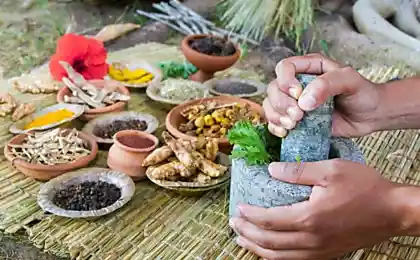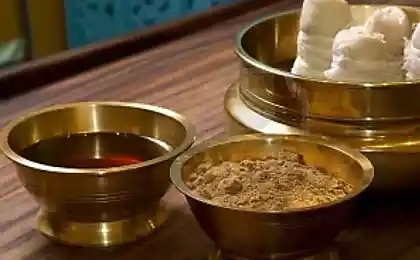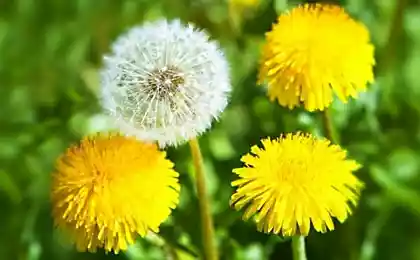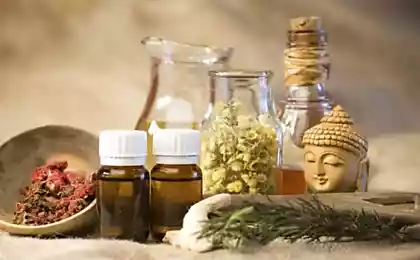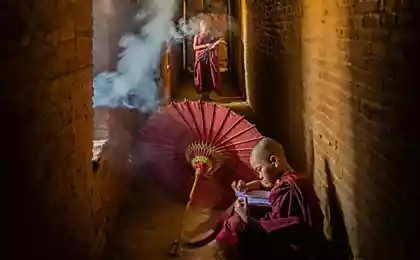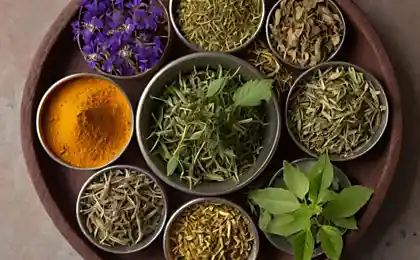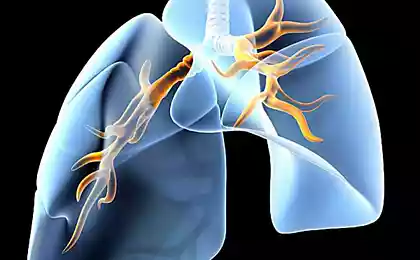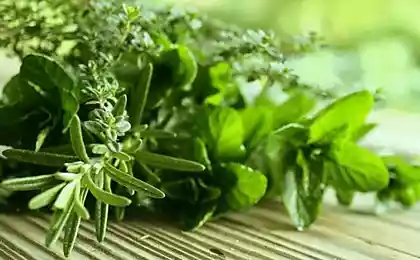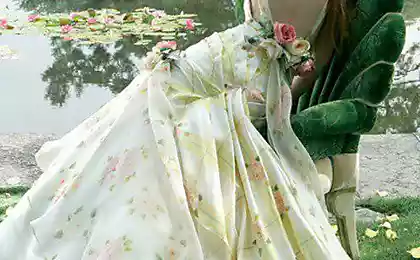332
Ashwagandha: The Root of Life in Ayurvedic Medicine

Translated from Sanskrit, it means “having the smell of a horse”, as it gives “horse” vitality and sexual energy.
Part used: root.
Energy: taste - bitter, astringent, action - warming, taste after digestion - sweet.
VK-P and Ama+ (in excess)
Tissue action: muscles, fat, bones, bone marrow, nervous and reproductive tissue.
Effects on systems:Reproductive, nervous, respiratory.
General action:Tonic, rejuvenating, aphroditic, strengthening nerves, sedative, astringent.
Indications:
- general decline,
- sexual weakness,
- nervous exhaustion,
- period of recovery;
- problems associated with old age,
- childishness
- memory loss,
- muscle weakness,
- spermatorea,
- overwork,
- tissue insufficiency,
- insomnia
- paralysis,
- multiple sclerosis,
- eye weakness
- rheumatism
- skin diseases,
- coughing
- difficulty breathing,
- anemia,
- fatigue
- sterility,
- Swelling of the glands.
Ashwagandha occupies the same place in Ayurvedic medicine as ginseng in Chinese, but it is much cheaper.
The basis of its action is due to the fact that it increases Ojas (Ojas, in modern language, is the energy of the immune system and sexual strength). When Ojas levels drop, it is accompanied by degenerative and chronic diseases, difficult to treat or incurable infections and nervous disorders.
AshwagandhaIt should be used in a sattvic diet, that is, in food that promotes spiritual enlightenment. Ashwagandha can be used in the form of tonic enemas (decoction). This is one of the most powerful tonic herbs, which replenishes the energy of the body. It is used for severe prolonged diarrhea, with chronic dysentery,
Hemorrhoids.Vata-type, when hemorrhoidal nodes are dry, hard, painful, non-purulent, accompanied by constipation.
Ashwagandha is also shown with Vata-type malabsorption - a state of weakness of the small intestine, to which adverse environmental factors, including dysbiosis, lead. Vata-type malabsorption is accompanied by gas formation, bloating and migratory pain, dry skin, the appearance of cracks in the tongue and anus, weight loss and a tendency to arthritis. Periods when the stool is watery and frothy are interspersed with periods when the stool is dry and hard. There is a loss of energy that ashwagandha replenishes.
Ashwagandha is also used in the complex treatment of candidiasis, which, according to Ayurveda, is considered a manifestation of internal weakness and disturbed harmony. Therefore, the goal of treating candidiasis is not only to destroy the fungus, but also to increase the level of energy.
The same principle of increasing the level of energy and immunity is used in the use of ashwagandha in the complex treatment of parasitic diseases.
Ashwagandha is also used in the treatment of low body weight, as a means to calm the nervous system. However, it should be borne in mind that with excess weight, exceeding the recommended dosages of ashwagandha can lead to the accumulation of toxins and further weight gain.
Basically, ashwagandha should not be used in the treatment of colds, but in cases of dry cough, loss of voice and hoarseness, insomnia and weakness, its use as a tonic is possible. It is good to use ashwagandha during recovery from colds.
In the treatment of asthma, ashwagandha is not used, as it can worsen the condition, but its use in long-term debilitating treatment in the periods between attacks is shown.
Similarly, ashwagandha is used in the treatment of hay fever and allergic rhinitis: it is not used in the acute phase of the disease, and is used in the periods between attacks of the disease as a lung tonic.
Thus, the general principle of using ashwagandha in the treatment of diseases of the bronchopulmonary system is manifested: as a tonic, ashwagandha can worsen the condition in the acute phase of the disease, but during the recovery period, the use of ashwagandha is very useful, as it restores and strengthens the immune system.
Ashwagandha is indicated in the treatment of Vata-type heart diseases, when they are manifested by a heartbeat, a feeling of interruptions in the work of the heart, a feeling of numbness and compression in the chest, as well as pain in the heart area of a pulsating, breaking or explosive nature. At the same time, insomnia, shortness of breath, dry cough, constipation are concerned, there are often dark circles under the eyes. The patient is annoyed by noise and loud speech. Attacks usually occur after overwork at work or excessive physical exertion. There is anxiety, fear, anxiety, sometimes fainting, after which these symptoms increase.
In cases of Vata-type hypertension, which is accompanied by unstable, periodic manifestations and nervous disorders, ashwagandha is used for a long time, so in this course of hypertension, it is mainly tonic therapy that is indicated.
Ashwagandha can also be used for Vata-type urinary tract infections, which are accompanied by a long chronic course without exacerbations. In this case, ashwagandha acts as a renal tonic.
Ashwagandha is of particular importance as a treatment for sexual impotence in men, as it is an excellent tonic for the male reproductive system. In this regard, the use of ashwagandha in the treatment of prostatitis and genital herpes Vata-type (genital herpes Vata-type passes without redness, inflammation, and is accompanied by dry skin, constipation, insomnia and loss of strength).
Ashwagandha is also used in the treatment of premenstrual Vata-type syndrome, which is accompanied by anxiety, depression, insomnia, constipation, headache and severe painful spasms. Nervousness, excitement, distraction are noted, dizziness, ringing in the ears, fainting, rapidly changing mood and moodiness are possible. A woman may experience excitement, a feeling of her uselessness, a feeling of cold, thirst and dry skin. She might feel like she's dying. Suicide thoughts may appear, but with the onset of menstruation, all this passes. Characterized by a small, only a few days, the duration of menstruation with increased pain at dawn and at sunset (vata time).
Ashwagandha is also well suited for the treatment of amenorrhea (delay or absence of menstruation), menorrhagia (excessive menstrual bleeding), Vata-type leukorrhea (whites are brown, sticky and dry, with severe pain), as well as menopause.
Of the other special conditions of a woman in which ashwagandha should be used, it should be noted its special usefulness in pregnancy, as well as miscarriage and in the complex treatment of female infertility.
Ashwagandha is also shown in the complex treatment of chronic, without high fever, fevers, when, usually, tonic therapy is required.
Ashwagandha can also be used for injuries during recovery, when wound healing is slow or there have been significant tissue damage. A good effect is given by ashwagandha for fractures, as well as in the recovery period after surgery.
Ashwagandha is useful for arthritis, when it is necessary to stop degenerative and atrophic processes in the bone tissue, but it is necessary to ensure that a heavy tonic does not increase the formation of toxins from undigested food.
Ashwagandha has shown good effectiveness in complex cancer therapy, which has been proven by clinical trials. In this case, high dosages are used - from 30 grams per day and above.
Ashwagandha should be used for children and the elderly. In children, ashwagandha contributes to the production of growth hormone, and for the elderly, it is the main tool for strengthening bones and joints, as well as helping with impotence, whiteness and incontinence.
A good positive effect of ashwagandha in baldness of Vata-type is noted, which is accompanied by dry skin, a state of anxiety, insomnia, constipation, instability of digestion and often occurs after a severe fear or serious illness.
And, of course, ashwagandha is one of the most important Ayurvedic remedies for the treatment of disorders of the nervous system. In particular, ashwagandha is used in insufficiency and degenerative processes, such as multiple sclerosis and Parkinson's disease. Ashwagandha is the main remedy for the treatment of anxiety conditions that accompany many nervous disorders. This is a good remedy for the treatment of insomnia, migraine, as well as epilepsy in combination with air.
Special attention should be paid to ashwagandha in the treatment of mental disorders. In this case, ashwagandha is used together with cow ghee oil. Ashwagandha is very useful for Vata-type insanity, which is accompanied by unreasonable laughter, crying or singing, memory loss, incoherence of speech, random gestures or impaired coordination of movements. Such a patient looks exhausted, exhausted, he is overcome by fears, anxiety, depression, insomnia and nightmares.
Ashwagandha is also used for disorders associated with yogic practices, such as pranayama or Kundalini awakening. Kundalini can also get out of hand with strong meditative techniques or drug use.
Ashwagandha is useful in the treatment of tobacco smoking in representatives of the Vata-type, and drug addiction in all types.
Sources used:
Vasant Lad and David Frawley. Herbs and Spices by David Frawley. Ayurvedic therapy.
Author: Evgeny Kobylyaev
P.S. And remember, just by changing our consumption – together we change the world!
Join us on Facebook, VKontakte, Odnoklassniki
Source: ayurveda-land.ru/article1.htm
